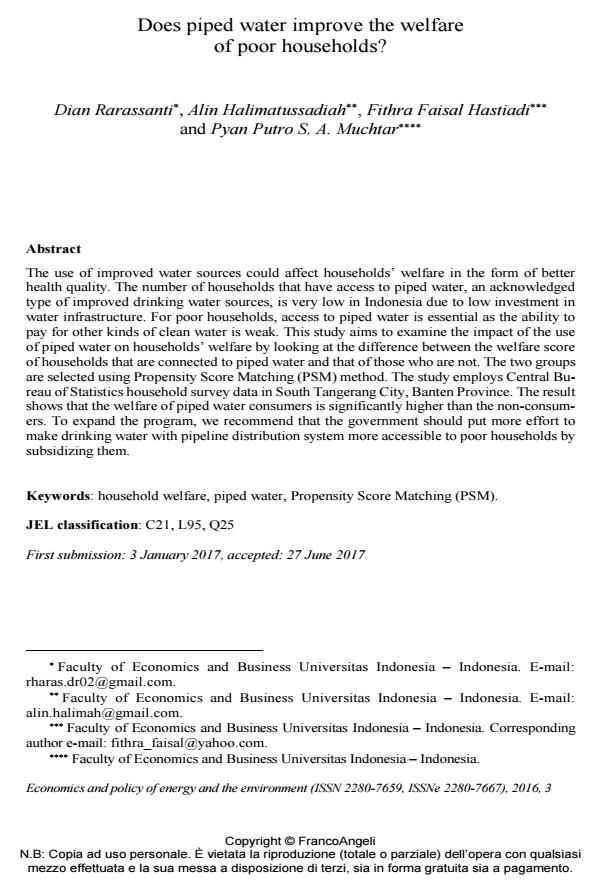Does piped water improve the welfare of poor households?
Titolo Rivista ECONOMICS AND POLICY OF ENERGY AND THE ENVIRONMENT
Autori/Curatori Dian Rarassanti, Alin Halimatussadiah, Fithra Faisal Hastiadi, Pyan Putro S. A. Muchtar
Anno di pubblicazione 2017 Fascicolo 2016/3
Lingua Inglese Numero pagine 16 P. 119-134 Dimensione file 225 KB
DOI 10.3280/EFE2016-003010
Il DOI è il codice a barre della proprietà intellettuale: per saperne di più
clicca qui
Qui sotto puoi vedere in anteprima la prima pagina di questo articolo.
Se questo articolo ti interessa, lo puoi acquistare (e scaricare in formato pdf) seguendo le facili indicazioni per acquistare il download credit. Acquista Download Credits per scaricare questo Articolo in formato PDF

FrancoAngeli è membro della Publishers International Linking Association, Inc (PILA)associazione indipendente e non profit per facilitare (attraverso i servizi tecnologici implementati da CrossRef.org) l’accesso degli studiosi ai contenuti digitali nelle pubblicazioni professionali e scientifiche
The use of improved water sources could affect households’ welfare in the form of better health quality. The number of households that have access to piped water, an acknowledged type of improved drinking water sources, is very low in Indonesia due to low investment in water infrastructure. For poor households, access to piped water is essential as the ability to pay for other kinds of clean water is weak. This study aims to examine the impact of the use of piped water on households’ welfare by looking at the difference between the welfare score of households that are connected to piped water and that of those who are not. The two groups are selected using Propensity Score Matching (PSM) method. The study employs Central Bureau of Statistics household survey data in South Tangerang City, Banten Province. The result shows that the welfare of piped water consumers is significantly higher than the non-consumers. To expand the program, we recommend that the government should put more effort to make drinking water with pipeline distribution system more accessible to poor households by subsidizing them.
Parole chiave:Household welfare, piped water, Propensity Score Matching (PSM).
Jel codes:C21, L95, Q25
Dian Rarassanti, Alin Halimatussadiah, Fithra Faisal Hastiadi, Pyan Putro S. A. Muchtar, Does piped water improve the welfare of poor households? in "ECONOMICS AND POLICY OF ENERGY AND THE ENVIRONMENT" 3/2016, pp 119-134, DOI: 10.3280/EFE2016-003010